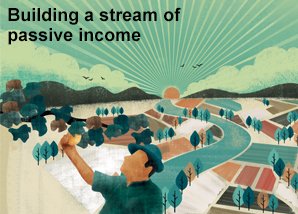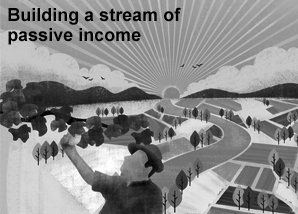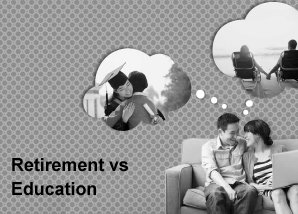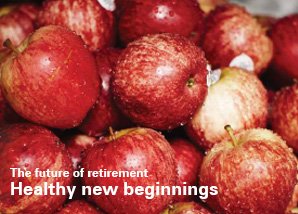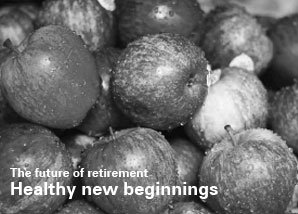
|
According to statistics compiled by Malaysia’s Employees Provident Fund(EPF) in 2016, only 22% of the 6.7 million active EPF contributors aged 54 years had sufficient savings or more to sustain themselves during retirement while the remaining 78% did not have the basic amount for their retirement years.1 As of 2015, two-thirds of EPF members aged 54 had RM50,000 or less in their accounts and would likely use up their EPF savings within five years of retirement.2
EPF data also showed that more than half of Malaysians have no financial assets and one in three Malaysians do not have a savings account.2 While the EPF raised the official target of the minimum EPF savings a member should have at age 55 at the beginning of 2017 to RM228,000 from RM196,800 previously, The Star Online reports that financial planners do not believe the revised minimum basic savings amount by EPF will be sufficient for a comfortable retirement due to increasing costs and the rise in life expectancy in Malaysia.2
According to The Star Online article titled Do you save enough for retirement?, financial planners in Malaysia generally advice clients that at age 60, a person must have around RM1 million in retirement savings.2 The same article goes on to quote a financial planner who points out that Malaysians are living longer and will need to factor in inflation for all their healthcare and day-to-day expenses in retirement.2
EPF Alone Insufficient
In an article titled What to invest in for your retirement on The Star Online, it states that the Malaysian mindset of relying on EPF as the only source of funding for their retirement has to change.3
According to the article, while EPF may have a history of providing decent dividends, far too many people make the error of putting their eggs in one basket when it comes to saving for retirement.3
Commenting in an article by The Star Online regarding EPF’s announcement of dividend payout for 2016, a financial professional said that Malaysians should be taking a more active role in ensuring they have sufficient funds for their retirement in light of the rising costs of living, longer life expectancy and a higher inflation rate because it is not enough to just rely on EPF’s annual dividend payouts.4
Creating Income Streams in Retirement
Malaysians are advised to set aside supplementary retirement savings to complement their mandatory EPF retirement savings.5 Supplementary savings can be in the form of unit trusts or stocks, to name a few.5 By combining your EPF savings with supplementary retirement savings, you can create a long-lasting stream of income in retirement.5
|
Investment Options for Retirement
|
Profitability Stocks and shares are generally considered high return investments.
Liquidity Depending on individual stocks and market conditions. Some stocks are more marketable than others and are traded in higher volumes. If market conditions are favourable, the stocks can be sold much easier than during bad times.
Security Stocks and shares are generally considered high-risk investments as they fluctuate according to market sentiments. For those considering investing in overseas stocks, the risk would include currency and political risks.
|
Profitability Investors have a chance to make capital gains as well as dividends. Profitability potential is fairly high and is ranked slightly below that of equities.
Liquidity Unit trust is considered liquid and can be redeemed on demand. The only delay is processing time, which usually takes no more than a week.
Security Comparatively safer than equities but still subjected to market forces, be it equity market or bond market.
|
Profitability Like unit trusts, investors stand a chance to make capital gains as well as dividends. Profitability potential is also comparable to unit trusts and ranked higher than traditional life policies.
Liquidity Considered liquid as investment units may be sold for cash.
Security Like unit trusts, this is comparatively safer than equities. Because the investment portion is subjected to market forces, it is considered less safe than traditional life policies. |
|
Profitability Usually on the lower end as compared to most other investments. Returns depend on the duration and generally, there is no capital appreciation. Because income stream is fixed, income may be eroded by inflation.
Liquidity Because capital sum is given as a purchase price for a stream of income, it cannot be converted to cash on any change of circumstances that demands lump sum cash. The stream of payment is in cash form, hence, it is totally liquid.
Security Generally considered one of the safest.
|
Profitability Depending on type, location and market timing.
Liquidity One of the least liquid investments to hold. Saleability depends principally on location and market timing.
Security It is tangible and scarce over the long term hence it is quite safe compared to equities. But, value can be severely eroded during bad times.
|
Profitability Lower than equities.
Bonds, depending on its grade but generally higher than bank deposits. If interest rates go down, bond prices go up providing capital appreciation.
Bank deposits, rates vary with time and financial institutions. No capital appreciation
Liquidity Bonds may or may not be liquid depending on its features.
Bank deposits are generally liquid but penalty applies if funds are liquidated before maturity period.
Security Bonds vary in safety depending on the issuing institution. Otherwise, it is safer than equities.
Bank deposits are one of the safest investment products. |
Source: The Star Online, What to invest in for your retirement, November 1, 2015.
 |
In addition to EPF savings, investing in a broad range of assets can provide current income as well as capital growth.5 This way, you can get the retirement spending money you need not just from interest and dividend payments, but also by periodically selling shares – or perhaps even property – from your investment holdings.5 This strategy will help make your retirement funds last with easy access to your savings.5
Another strategy to stretch your retirement funds is using the 4% retirement withdrawal method.5 With this method, you withdraw 4% of your total retirement savings in the first year.5 Then increase the amount by adjusting the inflation rate annually to maintain your purchasing power.5
For example, if you have a combined RM1 million in your retirement savings, you would withdraw RM40,000 for the first year of retirement.5 If inflation is running at 2%, you would increase RM40,000 to RM40,800 the next year, RM41,600 the following year, and so on.5
|
|
If you have a broadly diversified mix of investments, the interest and dividends garnered will return some investment income back to your portfolio.5 By following this systematic withdrawal plan, there is a relatively high chance that your savings will last at least 30 years.5 This method works best if you need more income than just interest and dividends, and maximising your retirement income is important.5
Lastly, deriving income from your retirement savings is a process of gradually transferring money from your long-term investments to a short-term spending account.5 You can move the amount you expect to need for 12 months into fixed deposits.5 That way you won’t have to worry about market swings affecting your immediate spending needs.5
Think of retirement savings as divided into two broad categories:
Long term money, which remains invested (stocks, bonds, unit trusts, property) to capture earnings and growth opportunities.5
A cash reserve or your spending money for the next year which is parked in low-risk and liquid accounts like fixed deposit.5
It is important to realise that no one method is perfect and you should change your approach as your circustances change.5 As financial professionals may tell you: there is no single “right” approach.5
If you would like to get a sense of what approach may be suitable to help you build your retirement income streams, speak to your Relationship Manager today or walk into any HSBC branches.
|
|
• Sources: 1 New Straits Times, Only 22 per cent of EPF contributors have sufficient savings for retirement, May 15, 2016. 2 The Star Online, Do you save enough for retirement? February 25, 2017. 3 The Star Online, What to invest in for your retirement, November 1, 2015. 4 The Star Online, Look beyond EPF dividends when preparing for retirement, February 25, 2017. 5 The Star Online, Sustainable retirement income, December 12, 2015.








 LIKE THIS ARTICLE?
LIKE THIS ARTICLE?






